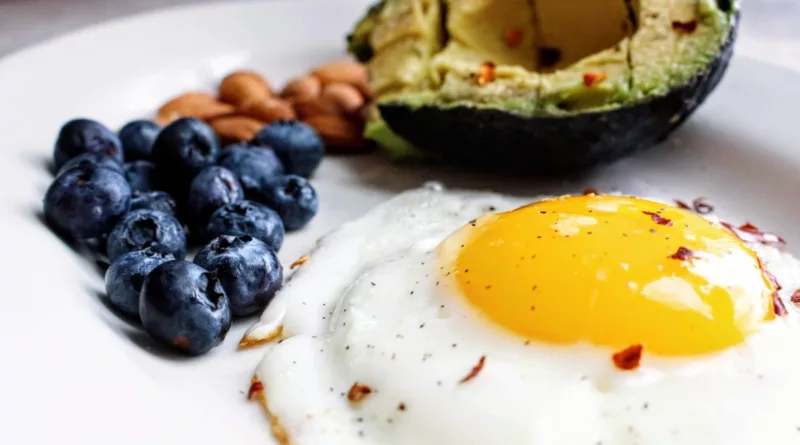Inside the Keto Diet: Everything You Need to Know
Everyone is talking about keto — learn what it is and how it works!
New and popular diets enter the market every year, but only a few of them have what it takes to stick around. The ketogenic diet was originally introduced in the 1920’s by doctors to help with certain medical conditions, but in the last ten years or so, it has been shared for its many weight loss benefits. In this article, we will discuss what keto is and how it helps people to lose weight while maintaining a surprisingly open meal plan.
What is Keto?
The ketogenic diet, popularly known as keto, is a diet that was first designed to mirror the metabolic patterns associated with fasting without actual fasting. To do this, those who adhere to the diet primarily focus on eliminating carbohydrates and prioritizing fats. This allows the body to enter ketosis, a process that stimulates fat burning—the goal of this particular diet.
Although keto was first designed to help with conditions like epilepsy, many people have found that keto is an exceptional weight loss solution. With this diet, people are able to retain a fairly comfortable diet while still supporting weight loss efforts.
With keto, you will prioritize meat and high-fat foods, but the food options themselves are considered very lenient by many people who try the diet. Keto focuses on low-carb meals that include less than 50 grams of carbohydrates each day.

What is Ketosis?
Ketosis is a natural metabolic state that occurs within the body. During ketosis, the body will stop burning glucose as an energy source and will burn fat instead.
With a typical diet, the average person will eat carbohydrates. These carbohydrates are broken down in the body to create glucose, which is a primary energy source. Through dietary control, people who adhere to the keto diet are able to start ketosis themselves, allowing their bodies to begin to burn fat instead of glucose.
How Does Ketosis Assist with Weight Loss?
Since the ketogenic diet activates ketosis, the body begins to prioritize burning fat—the very matter responsible for excess weight. As the body continues to burn fat for energy, the overall level of fat in a person’s body will begin to decrease, leading to weight loss.
The amount of weight loss will fluctuate depending on how well a person sticks to the diet plan, as well as some biological factors. However, many people experience fairly substantial weight loss that occurs at a fast rate. Standard estimates show that those who switch to the ketogenic diet can lose ten pounds or more in the first two weeks.

Keto Meals: Choosing the Right Ingredients
The weight loss associated with the keto diet is absolutely what catches a lot of attention, but people also love keto because it still allows them to eat a lot of foods that they enjoy. While many other popular diets limit anything traditionally deemed unhealthy or high-calorie in nature, keto allows people to enjoy many of the foods that other diets cut out completely.
With keto, it is important to prioritize high-fat foods above all else, offering a small bit of room for protein and carbohydrates. Fortunately, keto meals can be very enjoyable. Let’s discuss what this looks like in more detail.
Focus on Low-Carb Meals
The most important part of the ketogenic diet is ketosis. Without entering ketosis, fat burning cannot begin. However, this part of the diet involves switching the energy sources available in the body by restricting carbs.
Since most keto experts advise consuming less than 50 grams of carbohydrates each day, it is very important to be aware of how many carbs you are actually consuming in your diet. High-carb items, like bread and pasta, should be limited to very small daily amounts. If you have too many, your body will not enter ketosis, and you will not begin to see the benefits of the diet. Choosing low-carb meals every single day will positively influence how effective this diet is.

Prioritize High-Fat Foods
Keto encourages your body to burn fat, but it also encourages you to eat fat in order to support the process. Fat should make up close to 80% of your diet on a daily basis with little variety.
The ketogenic diet’s focus on prioritizing high-fat foods is actually one reason why people really enjoy it. Foods like bacon, cheese, avocado, and oils all fit perfectly into a ketogenic diet. With this diet, you can enjoy a bacon and avocado cheeseburger—as long as the bun is keto-friendly, of course!
Common Keto-Friendly Food Options Include:
- Meat
- Fish
- Cheese
- Eggs
- Oils
- Nuts
- Milk
- Butter
- Heavy Creams
Know Your Numbers for Fruits and Veggies
The trickiest part of adhering to a keto diet is managing your fruit and vegetable intake. While many other diets prioritize fruits and veggies, the low-carb nature of keto means that it is important to know exactly what you are eating from these categories.
Many fruits and veggies have a number of carbohydrates that can stop your body from entering ketosis. Like bread and pasta, fruits and vegetables must also be tracked to ensure the right ratio of carbohydrates in the diet. Choosing low-carb fruits and vegetables, like avocado, tomatoes, grapefruit, and blackberries, can help you to build great keto meals.
Determine if Keto is the Right Diet Plan for You
The ketogenic diet has exceptional results for many people, but that doesn’t mean it is the right diet choice for every person. To determine if keto is right for you, it can be beneficial to discuss the diet with your doctor to ensure it is a safe match if you have any concerns. Starting with keto can be very simple, and many modern menus accommodate this dietary preference, allowing you to continue to eat at your favorite places while pursuing your new health and fitness goals. Through keto meals and consistency, you can start to see weight loss results in as little as two weeks!
This is not professional medical advice.

